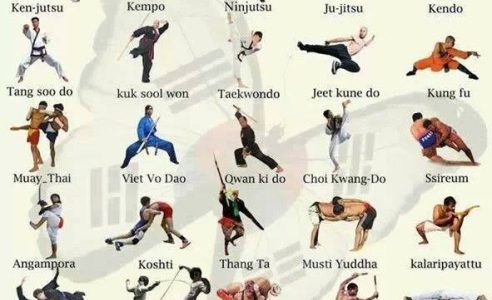The Development And Historical Context Of Martial Arts Worldwide
The Development And Historical Context Of Martial Arts Worldwide
Blog Article
Write-Up Written By-Sutton Matthews
Martial arts have a fascinating background that spans centuries and continents. You may locate it interesting exactly how old techniques like Shuai Jiao and Kalaripayattu laid the groundwork for modern battle techniques. These techniques not only highlight physical abilities but also mirror the cultures that birthed them. As you explore their development, take into consideration how globalization has actually transformed these traditional forms right into crossbreed styles. What influences do you assume have formed today's martial arts landscape?
Ancient Martial arts: The Structures of Combat
As you explore the world of old martial arts, you'll find the rich structures that formed fight methods across cultures. Early techniques focused on Self-Defense and survival, usually incorporating strikes, hurting, and weaponry.
In old China, for example, techniques like Shuai Jiao highlighted throws and joint locks, while India's Kalaripayattu showcased agility and liquid motion. Japanese samurai developed Kenjutsu, a refined swordsmanship that highlighted technique and technique.
These martial arts offered not just for battle but also as a way of individual advancement, instilling worths like regard and willpower. https://dominickpwdjq.elbloglibre.com/35546989/equip-yourself-and-increase-self-confidence-the-benefits-of-self-defense-workshops blending of these methods gradually laid the groundwork for the diverse martial arts you see today, each mirroring the unique viewpoints and needs of its society.
The Social Impact on Martial Arts Development
While martial arts commonly mirror the useful requirements of a culture, they likewise embody the cultural worths and beliefs of their beginnings. When https://www.abc10.com/article/entertainment/television/programs/to-the-point/filipino-american-community-stockton-preserves-history-filipino-martial-arts/103-a3fed167-b92e-483c-b04f-112c45948790 check out various martial arts, you'll see exactly how they're affected by religion, viewpoint, and social standards.
As an example, the focus on regard and technique in Japanese martial arts stems from Zen Buddhism and samurai society. On the other hand, Brazilian Jiu-Jitsu promotes adaptability and technique, formed by the demand for efficiency in a varied, multicultural environment.
You may locate that the routines, attires, and training methods show an area's history and identification. By understanding these cultural impacts, you deepen your gratitude of martial arts and their function in shaping human experiences around the world.
Modern Adaptations and the Globalization of Martial arts
Martial arts have transformed substantially in current decades, adapting to contemporary society and worldwide influences. You'll notice that conventional types have mixed with contemporary methods, creating hybrid styles like mixed martial arts. These adjustments accommodate varied target markets, making martial arts obtainable and attractive worldwide.
With the rise of social media and electronic platforms, you can locate tutorials and competitors from all edges of the world, breaking geographical obstacles. This globalization has caused a shared gratitude for various disciplines, from Brazilian Jiu-Jitsu to Taekwondo.
As you involve with these arts, you'll understand they're not nearly battle; they advertise fitness, discipline, and mental wellness.
Eventually, modern adaptations have actually enhanced the martial arts landscape, making it a vibrant and advancing practice.
Final thought
In exploring the background and development of martial arts, you reveal an interesting mix of methods, cultures, and ideologies. From ancient self-controls like Shuai Jiao and Kalaripayattu to the contemporary flexibility seen in mixed martial arts, martial arts show humanity's quest for Self-Defense and individual growth. As you involve with these methods, you not just gain abilities yet additionally a deeper appreciation for the diverse customs that form our world today. So, continue your journey and welcome the art of combat!
